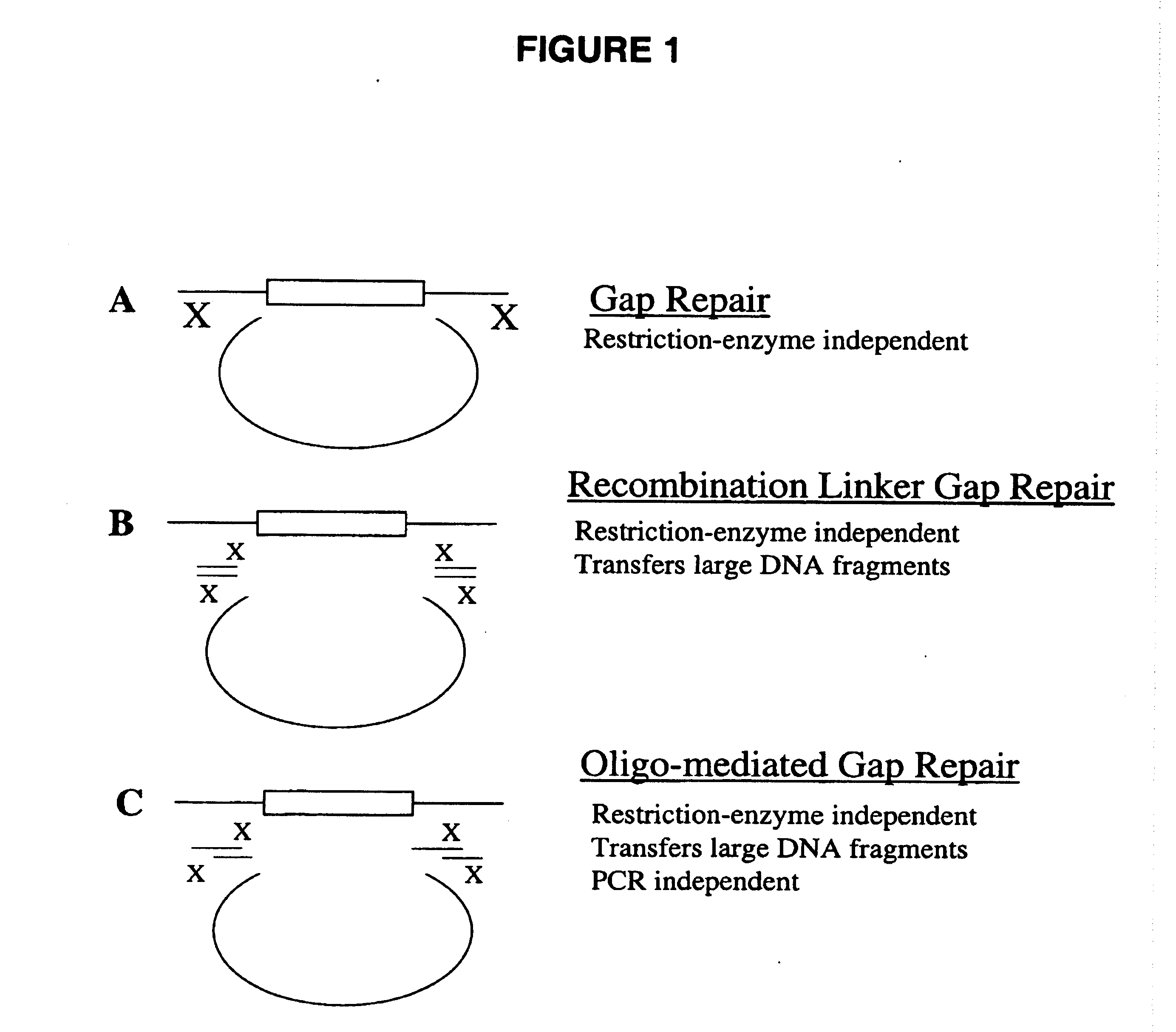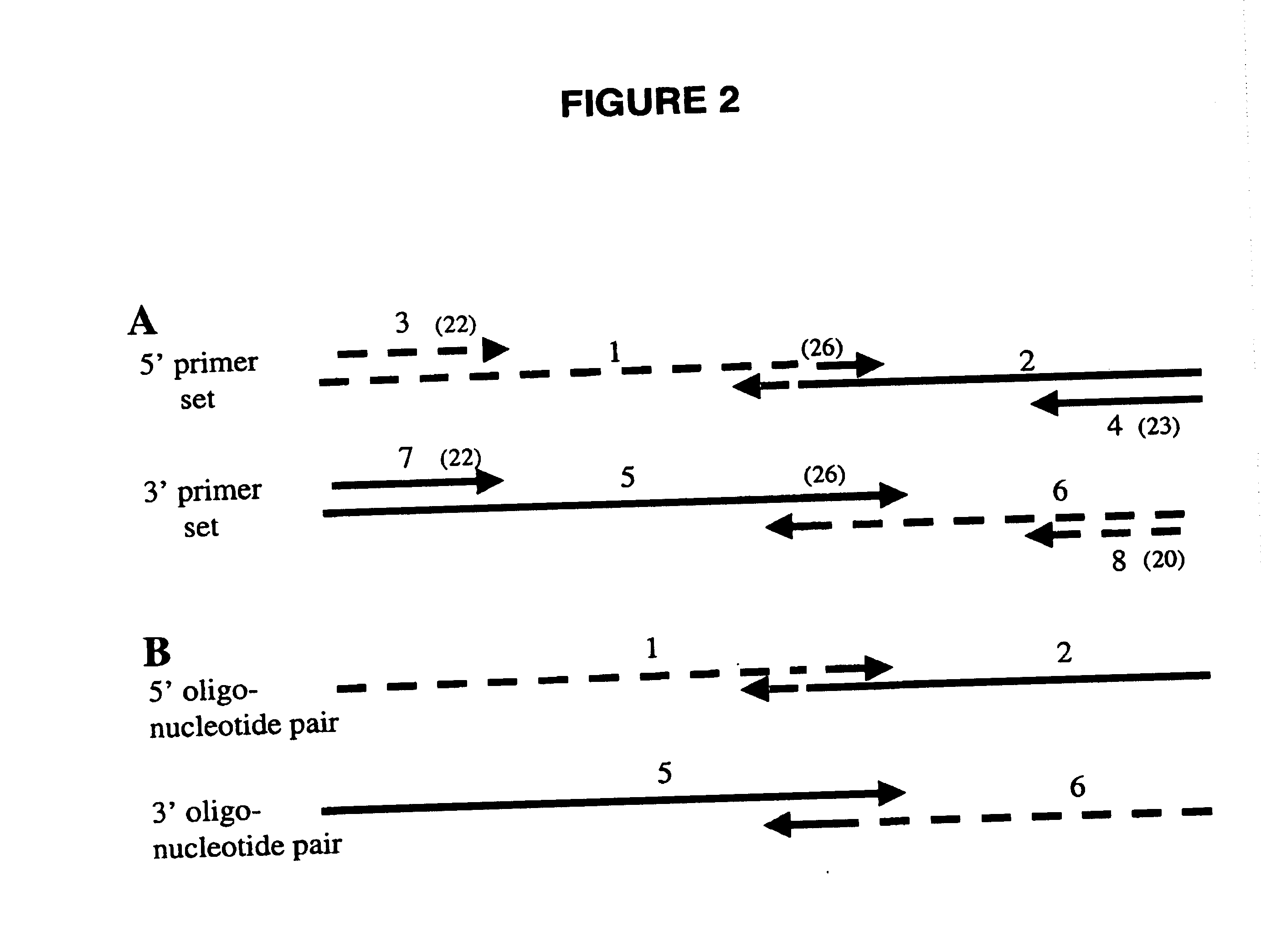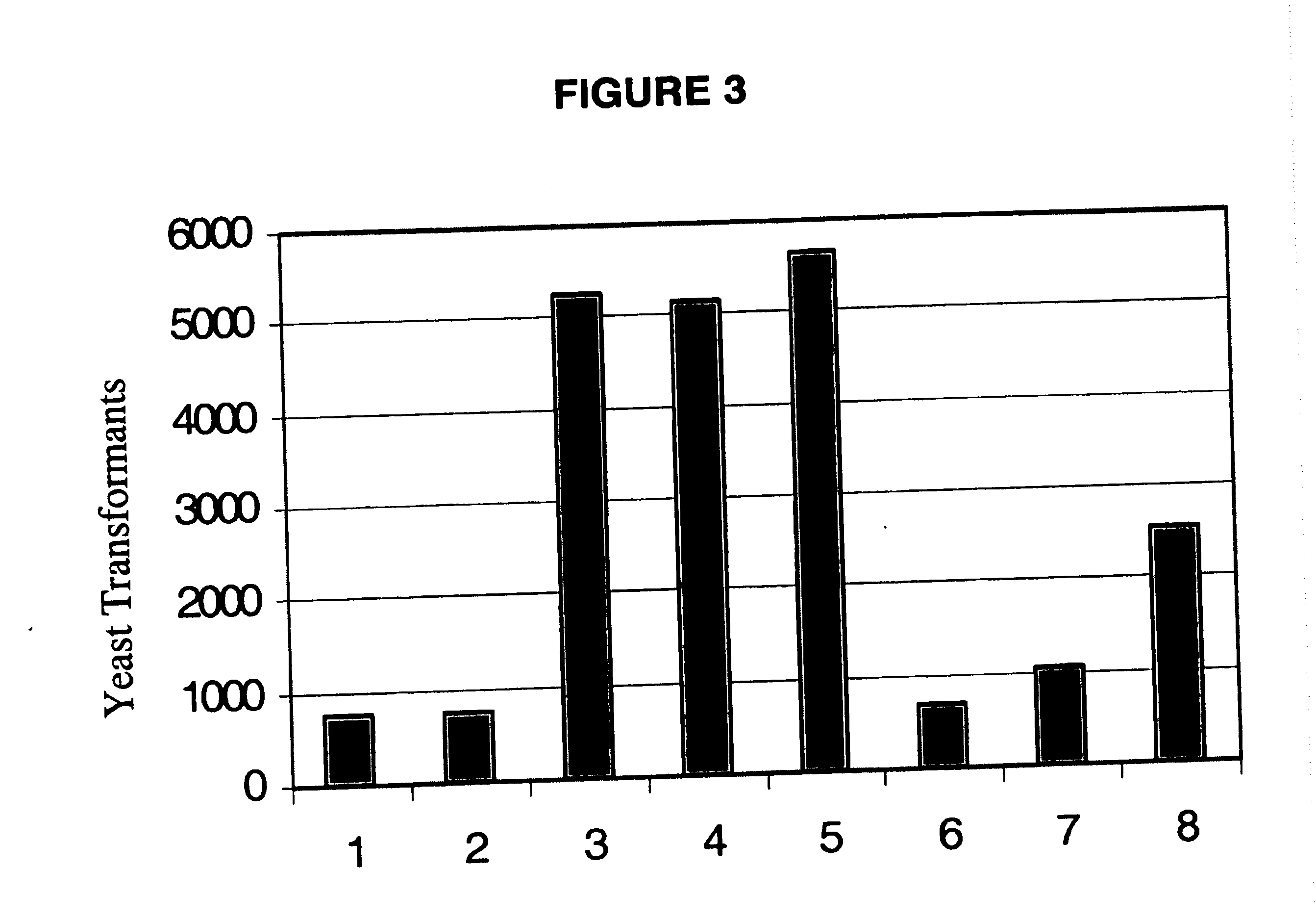Gene manipulation method using homologous recombination
a gene and recombination technology, applied in the direction of microorganism testing/measurement, stable introduction of dna, biochemistry apparatus and processes, etc., can solve the problems of time-consuming, traditional, enzyme-based cloning, and difficult to obtain relatively large, error-free pcr products
- Summary
- Abstract
- Description
- Claims
- Application Information
AI Technical Summary
Benefits of technology
Problems solved by technology
Method used
Image
Examples
example 1
Use of Overlapping Oligonucleotides to Form Linkers
[0060] Strains, Growth Conditions, and Plasmids. The yeast strain used in this study was YEF473 MATa / α his3-Δ200 / his3-Δ200 leu2-Δ1 / leu2-Δ1 lys2-801 / lys2-801 trp1-Δ63 / trp1-Δ63 ura3-52 / ura3-52 (Bi and Pringle, Mol. Cell. Biol. 16, 5264-5275, 1996). Yeast media have been described previously (Lillie and Pringle, J. Bacteriol. 143, 1384-1394, 1980; Guthrie and Fink, Methods Enzymol. 1, 1-933, 1991). The plasmids used were the high-copy pRS423 (Christianson et. al., Gene (Amst.) 110, 119-122, 1992), and pCDN (Aiyar et al, Mol. Cell Biochem. 131, 75-86, 1994), which were restricted with EcoRV (Promega) and NotI (Boerhinger Mannheim), respectively, extracted with phenol / chloroform, EtOH precipitated, and re-suspended in water. 0.1 μg of EcoRV-digested pRS423 (vector), 1.5 μg (a 1-μg equivalent of the DNA sequences to be cloned) of NotI-digested pCDN (insert), and either 1 μg of double-stranded linker (FIG. 2A and see below) or 1 μg of eac...
PUM
| Property | Measurement | Unit |
|---|---|---|
| length | aaaaa | aaaaa |
| nucleic acid | aaaaa | aaaaa |
| size | aaaaa | aaaaa |
Abstract
Description
Claims
Application Information
 Login to View More
Login to View More - R&D
- Intellectual Property
- Life Sciences
- Materials
- Tech Scout
- Unparalleled Data Quality
- Higher Quality Content
- 60% Fewer Hallucinations
Browse by: Latest US Patents, China's latest patents, Technical Efficacy Thesaurus, Application Domain, Technology Topic, Popular Technical Reports.
© 2025 PatSnap. All rights reserved.Legal|Privacy policy|Modern Slavery Act Transparency Statement|Sitemap|About US| Contact US: help@patsnap.com



